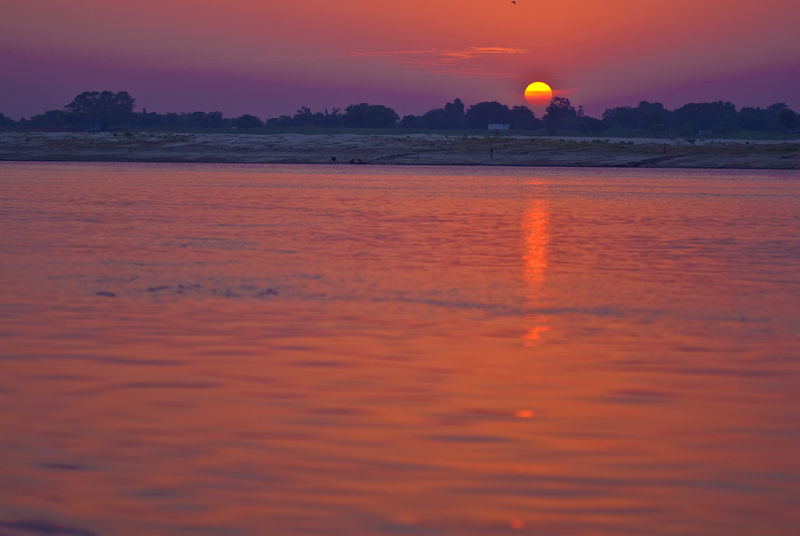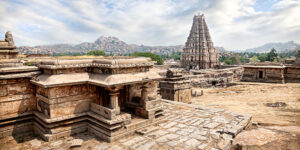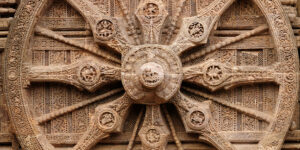It is said that during a service at an old synagogue in Eastern Europe, when the prayer was being said, half the congregants stood up and half remained sitting. The half that was seated started yelling at those standing to sit down, and the ones standing yelled at the ones sitting to stand up. The rabbi, learned as he was in the Law and commentaries didn’t know what to do. His congregation suggested that he consult a 98-year old man, who was one of the original founders of their temple. The rabbi hoped the elderly man would be able to tell him what the actual temple tradition was.
So he went to the nursing home with a representative of each faction of the congregation. The one whose followers stood during the prayer said to the old man, “Is the tradition to stand during this prayer?”
The old man answered, “No that is not the tradition.”
The one whose followers sat asked, “Is the tradition to sit during the prayer?”
The old man answered, “No that is not the tradition.”
Then the rabbi said to the old man, “The congregants fight all the time, yelling at each other about whether they should sit or stand!”
The old man interrupted, exclaiming, “THAT is our tradition!”
India is not in the tradition, nor in rituals, or can it be traced in history. India has no adjective to define it. India is simply India, as love is love. It can be felt, it can be experienced sensitively, it can be recognized intuitively but it is futile to put India into a certain framework or a perspective.
I can see the point Wendy Doniger is making. What one believes in it gives a certain focus, a direction, a movement forward. However, the subsequent task is to discern which direction has the potential to connect the past, the present, and the future. The task is to find out what evolutionary alternatives India in general, and Hinduism in particular, has shown. That, I feel, would be a more meaningful “alternative” to explore and elucidate.
India never emphasized History – it does not have a “History” in the western sense of the word “History”. History deals with facts, dates, and details for rational comprehension. India never cared about all these, instead, India looked into the layers of the inner world; it has manifested results of the inner search in symbols, metaphors, and poetic resonance – beyond cognitive or the rational realms of perception. So, to see India and explain it through any “alternative historical” point of view is so out of place and out of context.
The enlightened Mystic, Osho’s insight is profoundly relevant when he says: “India is not just geography or history. It is not only a nation, a country, a mere piece of land. It is something more: it is a metaphor, poetry, something invisible but very tangible. “(The Osho Upanishad, Chapter, 21)
So, how one may comprehend India? Thousands of streams and tributaries flowing, crisscrossing this land of mystics, yogis and millions of idol-worshipping devotees, philosophers and charlatans, emperors, impeccable artisans and celestial musicians. When looked at with an un-prejudiced view, without any a-priori perception, one can indeed find India a paradox, constant images of contradictions. Hardly anything makes sense if one goes by logic, and yet at another level, all seems to fall in place. I believe that, if one has lived in India for a week, one can easily write a book; if one has lived here for a month, he or she can manage to write an article; but if one makes a year- long stay or more in this country, one can barely write a paragraph – that is how enormously complex India is.
It is in the same context, if we see Hindu Religion or Hinduism, it has a kind of freedom. It does not decide what your prayer should be. It has no official prayer. It has no hierarchy — the bishop and the archbishop, etcetera; it knows nothing of that. It is an individual phenomenon. So it is very difficult to say what Hindu faith or belief is. Each one is free to worship in one’s own way. In that sense, it is almost like a chaos. It would be difficult to find a systematic explanation or description of Hindu religion.
Thousands of philosophies are available in the Hindu view for people to choose from, millions of alternatives. All kinds of ideas are in the market. You can choose any. You can even make your own way, a ritual or a practice. Choosing something from here, something from there, one can even make one’s own sort of mixture.
Hence, it needs to be recognized that, Hinduism is not one-dimensional, it is multi-dimensional. In one way it gives freedom, in another way it creates indiscipline. In one way it is democratic and beautiful, in another way it has no order, no system, and no structure. Everything seems to be open but confusing, un-clear and vague. And yet, perhaps Hinduism is like the mystery of a banyan tree – a noble tree with a majestic presence, rooted with massive offshoots. Hinduism, in brief, contains both the immanent and the transcendental simultaneously.
I conclude by sharing the enlightened view of Osho that reveals the nature and nuances of both India as well as of the Hindu way: “India’s way is not of searching with the help of a lamp. India’s way is like a bolt of lightning in the dark night. When lightening happens, all becomes visible simultaneously. It is not that a little is seen first, then a little more; no, there is sudden revelation, all is revealed at the same time. The flash of the lightening shows all that is. All the paths that go far away, as far as the horizon, all of them at the same time.
“In India, what we call experience, intuition, reveals all things simultaneously, like a flash of lightening. Hence, truth is seen in its totality, as it is.”
Asato Ma Sadgamaya, Chapter 16



